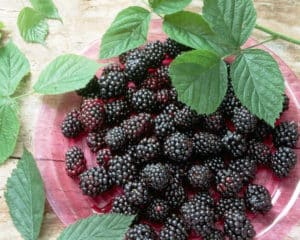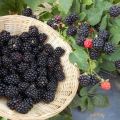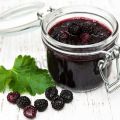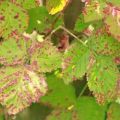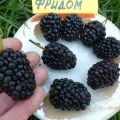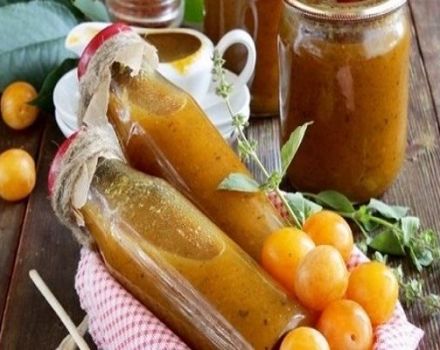Description of the best varieties of thornless blackberries, planting, growing and care
Many types of wild berries gradually migrate to summer cottages. Many people prefer sweet and fragrant blackberries, preparing jam and compotes from them. The berry is of great benefit to the body fresh, but it is difficult to harvest because of the thorny shoots that can hurt. Breeders offer the thornless blackberry varieties that have become popular in recent years.
Content
- 1 Description of thornless blackberry varieties
- 2 Pros and cons
- 3 Thornless blackberry varieties
- 4 Rules for choosing the right variety of thornless blackberries
- 5 Reproduction of thornless blackberries
- 6 When to plant blackberries
- 7 Features of planting blackberries
- 8 Blackberry care rules
- 9 Pests and diseases: precautions
Description of varieties of thornless blackberry
The cultivated blackberry has undergone a number of changes. For garden berries, it is characteristic that:
- It has a compact or creeping bush shape with shoots reaching a length of 1.5 to 4 meters, smooth, without thorns.
- A powerful, branched root system helps the crop quickly adapt to new conditions.
- Small openwork leaves are arranged on short petioles.
- Flowers of white or pink color are about 2 centimeters in diameter.
- Berries, similar in structure to raspberries, have a large white stalk with black or dark red drupes.
Some of the thornless varieties are resistant to low temperatures, others need shelter for the winter. The common climbing blackberry develops within 2 years. First, with the growth of young shoots, fruit buds are laid. Then they give berries and then the old ones are cut out. Repaired plant species without thorns can produce berries on both new and old branches.
Pros and cons
Blackberries with smooth stems are preferred because the culture:
- drought-resistant due to deep roots;
- due to late flowering, it is not affected by spring frosts;
- gives a lot of berries of excellent quality;
- unpretentious care;
- useful for humans;
- decorative.
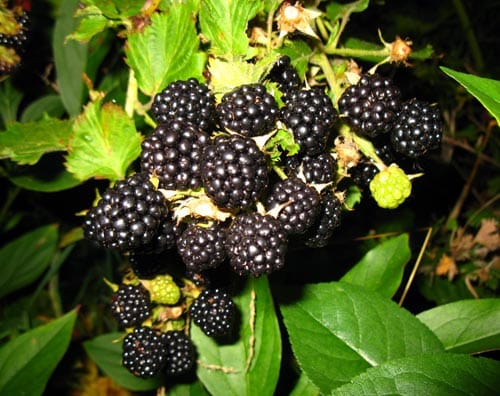
Blackberries can be enjoyed for a long time as they mature gradually. They contain a lot of vitamins and minerals that help:
- lower blood pressure;
- eliminate the symptoms of flu and colds;
- heal wounds and scratches;
- to establish the work of the digestive system;
- stop inflammatory processes in the genitourinary system.
The disadvantages of berry crops may be exposure to low temperatures in some varieties.
Thornless blackberry varieties
If the first experiments on growing blackberries in the garden were difficult, now they choose varieties without thorns. Thanks to them, planting and caring for berry crops is easier. You can choose a plant that will be well adapted to harsh conditions. Many people prefer remontant varieties in order to get large yields of aromatic and tasty berries annually.
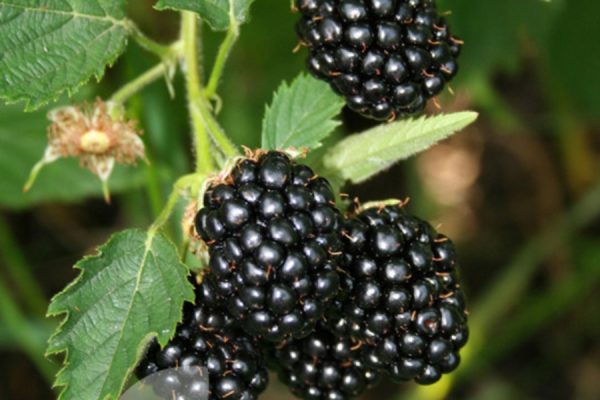
New thornless blackberry varieties
The number of new varieties of berry bushes is increasing every year. The best qualities of garden culture are laid in them.
Natchez
Berry bush pleases with large black fruits already in June. They taste very sweet, juicy. They do not ripen all at once, but within 35-40 days. High preservation of fruits and their good transportability are noted. Bushes with long and smooth branches are best covered with fibrous material for the winter so that they do not freeze. The rest of the culture does not require much maintenance.
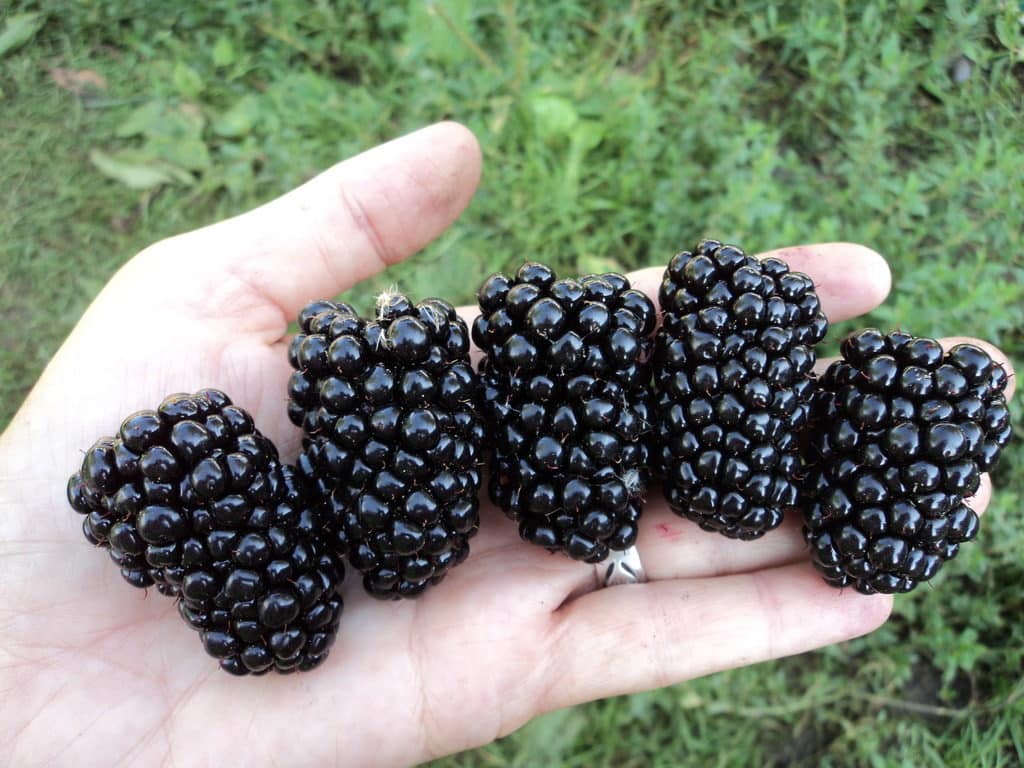
Ouachita
The advantage of the variety is in early ripening and rich yields, up to 30 kilograms per bush. When growing, observe the optimal distance by tying the branches to the trellis. Before wintering, the plants are covered with non-woven material or spruce branches.
Chester
One of the common varieties of berry crops ripens in the middle of summer. Fruiting occurs for a long time, within 30-40 days. The culture is appreciated for the fact that it is not prickly and bears fruit with large berries, sweet in taste. Although there is a slight sourness in them. The shape of the bush is semi-creeping. Fruiting shoots are cut annually to get up to 15 kilograms of harvest per bush. The plant can withstand frosts below 20 degrees, but gardeners believe that it is better to cover the plant before the onset of cold weather.

Black Satin
One of the oldest types of culture, which pleases with yields of up to 10-15 kilograms per bush. The yield increases if the plant is properly looked after, observing the rules of agricultural technology. The fruits of the plant reach 5 grams, have a sweet taste, rarely with a high acid content. Hard semi-creeping shoots of blackberries reach 5 meters, so they are pressed to the ground at a young age.
The varietal culture differs:
- frost resistance;
- unpretentious care;
- the duration of fruiting;
- disease resistance.
The only drawback is that the berries do not tolerate transportation well.
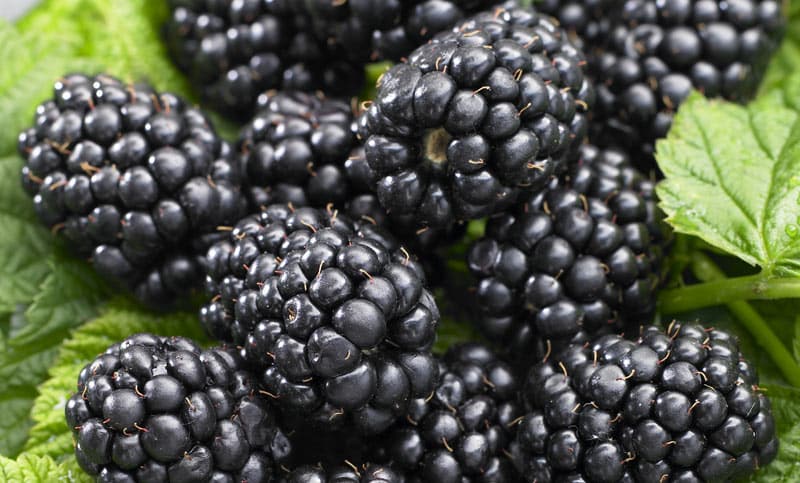
Loch Tei
The variety is famous for the fact that:
- gives yields up to 10-12 kilograms;
- bears fruit in large berries weighing 5-6 grams each;
- bush with shoots 5 meters long;
- withstands a drop in temperature to 20 degrees below zero.
Bushes are grown on trellises with a distance of 2-3 meters between them.
Kiova
This culture is one of the largest. Although this blackberry is not thornless, there are few sharp thorns on the shoots. For the sake of high yields of tasty sweets, it is worth growing the variety for a year. Each berry can reach 20 grams and ripens at the end of July. Black fruits are harvested for a long time. They keep fresh for a long time and tolerate transportation perfectly.
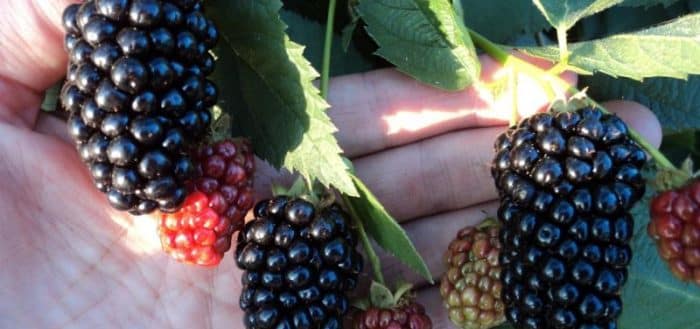
Columbia Star
To those who start grow blackberries in the garden, you should pay attention to this variety. The advantages of the culture include early ripening periods, and unusual berries weighing 10-15 grams each. They retain their presentation for a long time and taste good. For the southern regions, this is the most suitable plant. It does not tolerate cold well, but it is resistant to drought.
Chachanska Bestrna
This culture has sweet and sour berries weighing 10 grams. Their ripening begins in the first decade of July. Shoots without thorns are easy to care for. They only need a garter as they reach over 3 meters in length. The frost resistance of the plant is noted, although it is advised to cover the bushes in regions with cold winters.
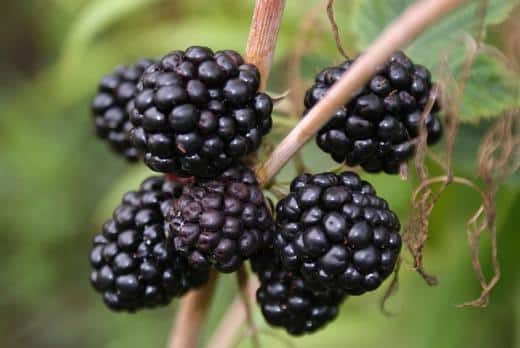
The disadvantages include the low transportability of berries, which quickly begin to lose their shape, flowing out of juice.
Doyle
This culture is most suitable for the southern regions. In good conditions, fruit yields are off scale, because up to 50 kilograms are harvested from one bush. In the northern regions, the plant will not have time to ripen, since ripe fruits begin to be harvested only in August.
In addition to generous harvests, the crop is renowned for its heat tolerance.
Waldo
The creeping blackberry variety has been known for a long time. It belongs to plants with medium ripening periods. The first berries weighing 6-8 grams appear in early July. They are fragrant, with a sweet and sour taste. They choose a plant for planting in small summer cottages, because the shoots reach a length of only 2 meters. They must be tied to a support, and covered for the winter.
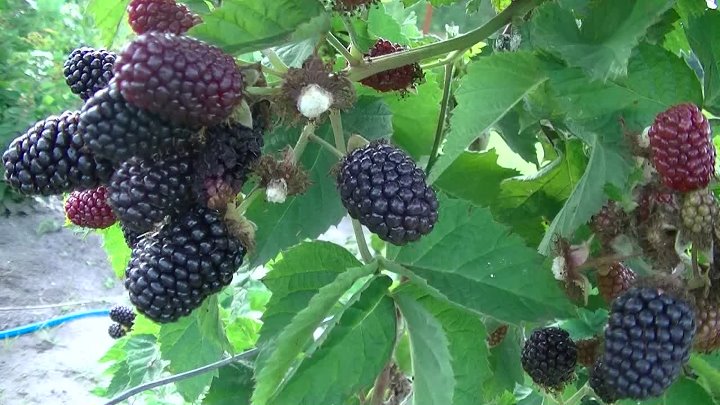
Loch Ness
The taste of the berries differs little from the wild blackberry, and they are close in weight, up to 5 grams each. From one bush, you can collect up to 25 kilograms. The plant's features are its unpretentiousness, high productivity. The crop multiplies quickly and is therefore suitable for growing berries for sale. Fruits reach full maturity in early August.
Oregon Thornless
The variety is considered to be the best, because the bushes not only give tasty berries, but can also become a decoration of the site. Creeping shoots up to 4 meters long are used in creating arches, decorating gazebos, and recreation areas. Black fruits taste great. Although the harvests are small, only 10 kilograms per bush, the berries are very tasty and fragrant.
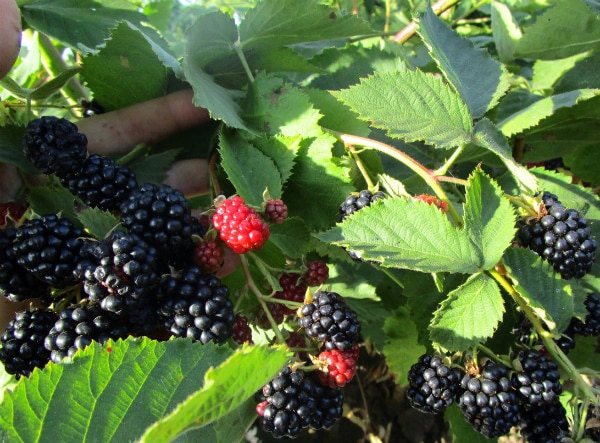
Osage
For those who do not pursue high yields, but appreciate the taste of berries, this variety is suitable. The culture bears fruit with sweet, without soreness berries. They can be enjoyed during the second half of the summer. But blackberries are suitable for those who live in the south. The plant is very tender, does not tolerate low temperatures.
Repaired blackberry varieties
Repaired types of berry crops are used for harvesting annually or 2 times a year. If you completely cut the plantation under the root in the fall, then the young shoots that appeared in the spring will bear fruit already at the end of summer. When fruit-bearing branches are cut out before winter, they get fruits both in the middle of summer and at the end of the season. Remontant plant species are suitable for the southern regions, since often the bushes freeze out where the winters are cold. And then there will be no sense from blackberries.

Freedom
Among the newest varieties, Freedom is not yet so widespread. Bushes with erect shoots 2 meters long do not have thorns. The berries appear for the first time at the end of June, then in August-September. They are large and sweet.
Black Magic (Black Magic)
Differs in vigorous shoots with a small number of needles. Black fruits reach a weight of 9-10 grams, juicy, sweet. Up to 5 kilograms of berries are harvested from one bush during the summer. The culture is most suitable for growing in central Russia, in the south. The bushes tolerate drought well, but they need to be covered for the winter.
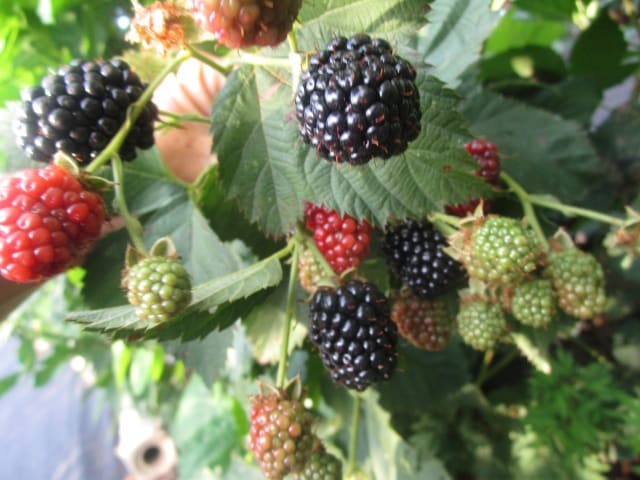
Ruben
Twice - in June and August - the berry crop bears fruit. The fruits are large, up to 10 grams each. Medium yields - up to 6 kilograms per plant. The variety is distinguished by upright shoots with thorns. Plantations tolerate frosts down to -16-20 degrees. The berry grows well in the shade, does not require special care.
Prime-Ark 45
Breeders are advised to try the cultivar as it is considered to be fruitful. And the quality of large berries is high. They have a pleasant taste, are fragrant, and tolerate transportation well. Shoots, though with thorns, but few thorns.
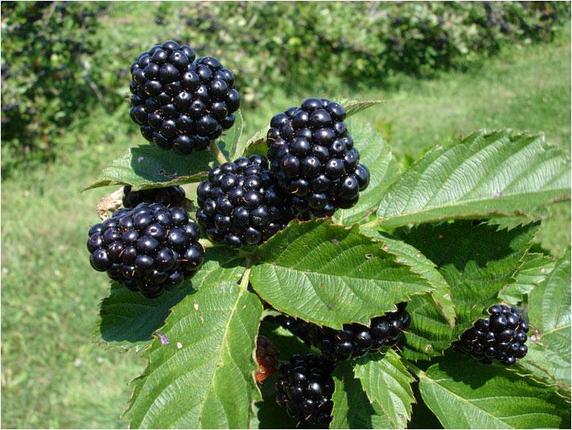
Traveler (Prime-Ark Traveler)
The culture of American selection is characterized by high yields. Shrubs with erect stems without thorns have excellent adaptability to temperate climates. But without shelter, preferably with a two-layer spandball, the shoots can freeze out.
Frost-resistant varieties
For regions with cool summers and frosts, winter-hardy plant species are suitable.There are few such varieties, but it is best for gardeners of Siberia and the Urals to choose them. Then you can be sure that the berry will have time to ripen, and the flowers will be preserved during spring frosts.

Blackberry variety Agavam
One of the most popular berry crops for growing in temperate regions. Agave is prized for:
- the power of the bush;
- decorativeness of erect and creeping shoots;
- brushes of berries of black classic color;
- harvests of 15 kilograms per bush.
The plant bears fruit for 15 years, giving stable yields. In addition to resistance to low temperatures, the variety tolerates heat well, grows well in the shade. The berry rarely gets sick.
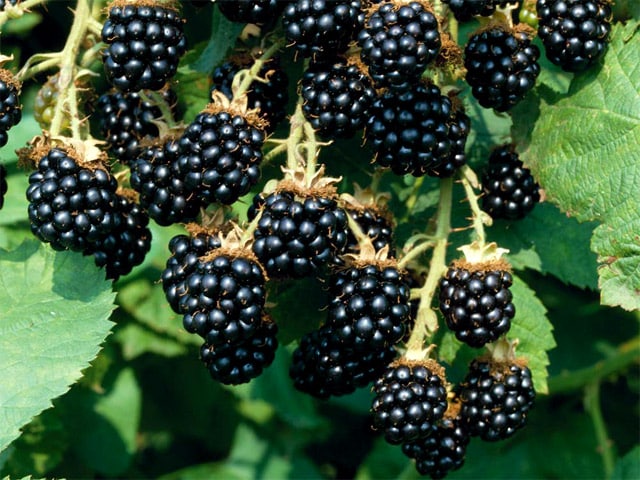
Blackberry Polar
Thornless shoots reach a height of 2-2.5 meters. They are smooth, not prickly. Fruits become ripe from late June - early July. They are distinguished by a weight of 10 grams, richness of black color, sweet taste. The berries are characterized by long-term preservation of the presentation after transportation.
The plantation of berry crops can not be covered in the fall, since it is winter-hardy.
Rules for choosing the right variety of thornless blackberries
For those who want to grow a fruit crop on their site, it is necessary to consider whether the variety can withstand the climatic features of the region. Indeed, many of the plants can only mature in warm climates. Spring frosts are dangerous for the culture, which can ruin the future harvest.
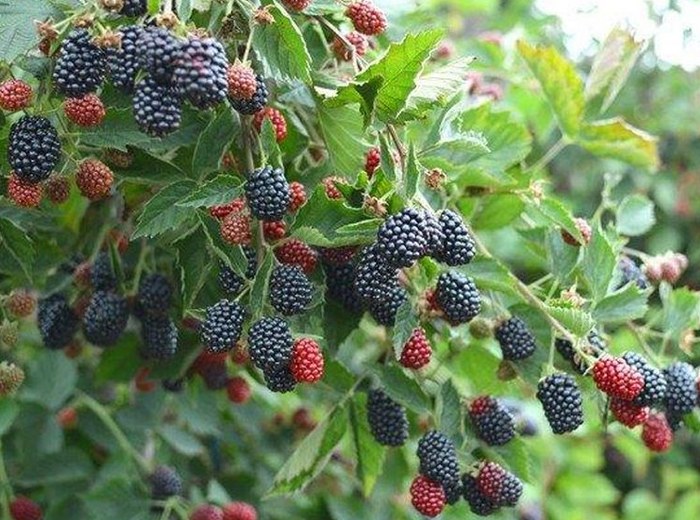
For the Moscow region
Regardless of the region's winter temperatures, it is best to cover the blackberry bushes in the fall. Then it is safe to say that the plant will bear fruit. Most gardeners choose those varieties that can withstand temperatures of 16-20 degrees below 0.
During snowstorms, it is better to bend the bushes to the ground or tie them to a trellis. They will not break under heavy snow cover.
For central Russia
Gardeners in these areas are offered crops that have adapted well to cool summers, winds and snowy winters. The studless version of the berry shrub is most suitable when it can be frost-resistant. Bushes with an average length of shoots are better suited. This is the Doyle variety, which grows well in the shade and tolerates small frosts. Of the repairmen - Ruben. It is necessary to cover the berry plantation before the onset of cold weather.
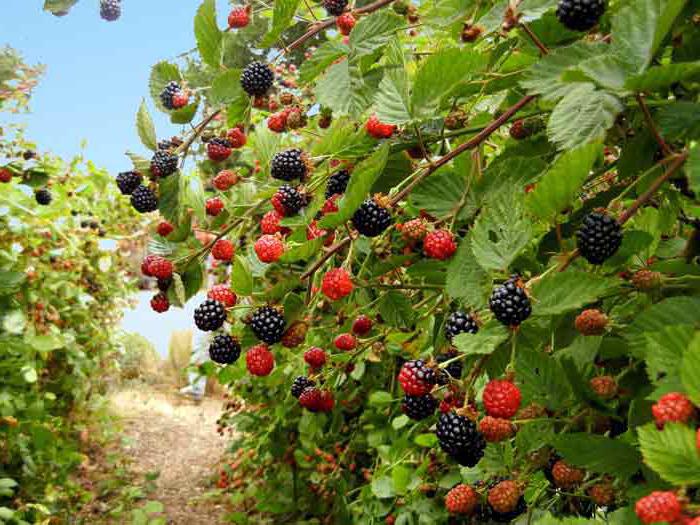
For the Urals
In harsh conditions, blackberries can grow, but such types of crops are chosen that are able to withstand both frost and cold winds. Flowers often die from return frosts in the spring. Therefore, frost-resistant plant species are preferred. This is with Polar Aghavam. Black Satin and Valdo are also possible, but with shelter for the winter.
Reproduction of thornless blackberries
You can propagate a berry culture in different ways. The seed method is rarely used, since it is not always possible to obtain the desired result. Most often, they prefer reproduction in a vegetative way. Autumn is considered the optimal time for the procedure. Before winter, the roots of the plant will have time to get stronger, and in the spring they will give young shoots.

Digging in branches
The method involves obtaining a large number of young bushes. Take part of the horizontal apical layers, bend to the ground, without separating from the mother bush. Then sprinkle the base with earth, leaving the top above the surface of the soil. To stop growth, the shoot is pruned. To better secure the layering, it is pinned. The procedure is performed in early August.
Water it for 1-2 months so that the branch takes root. In the first half of October, it is necessary to carefully separate the shoot with roots and transplant to a new place.
Root processes
The berry takes root best of all when propagated by root processes. With the onset of November cold weather, the roots of the bush are slightly exposed and cuttings are cut from 6 to 9 centimeters long. Choose those processes that are 1.5 centimeters thick.Planting material is stored in bags in the refrigerator or cellar. Cuttings should be viewed and ventilated at least once a week. In February, the shoots are placed in a nutritious soil, and in April, the grown shoots are placed in a permanent place in the garden.
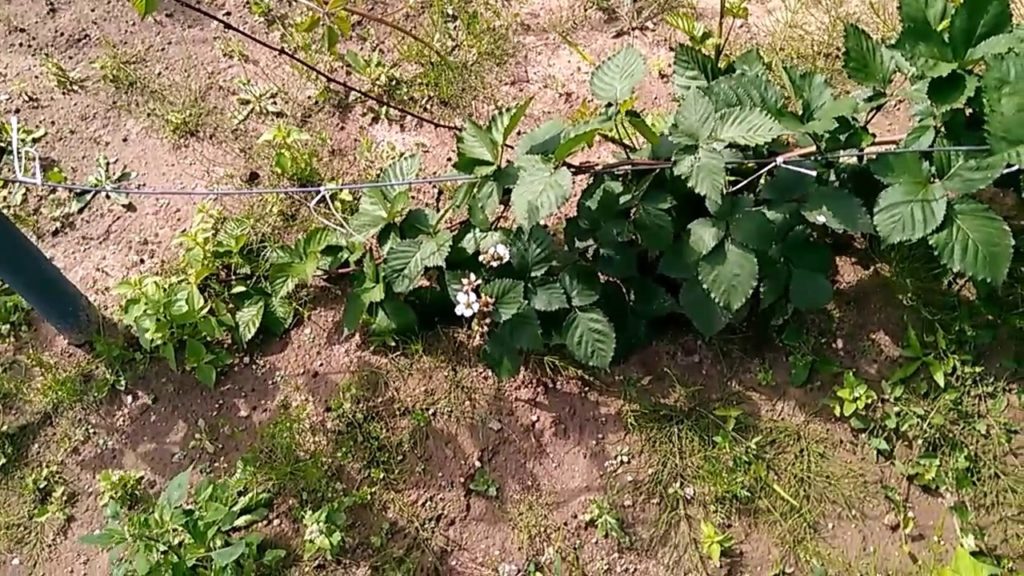
Cuttings
Cut green cuttings in autumn in October. Their length should not be less than 40 centimeters. It remains to dig them into the ground and leave them until spring. As soon as the snow melts, the slightly trimmed shoots are covered with a film, creating a small greenhouse. They are regularly watered and loosened. The appearance of leaves is a signal for transplanting to a permanent place.
When to plant blackberries
Blackberry cultivation, berry yield depends on when the shoots are planted. You can plant a berry crop in autumn and spring. It all depends on climatic and weather conditions.
In autumn
Usually in October frost-resistant and early varieties of plants are planted. They will have time to take root in a new place, to adapt before the onset of cold weather. Autumn is suitable for planting berry bushes for gardeners in central Russia, the Moscow region, the Leningrad region. The onset of winter takes place according to the calendar, and the blackberry will have time to prepare for adverse conditions. And the summer berry will have time to ripen.
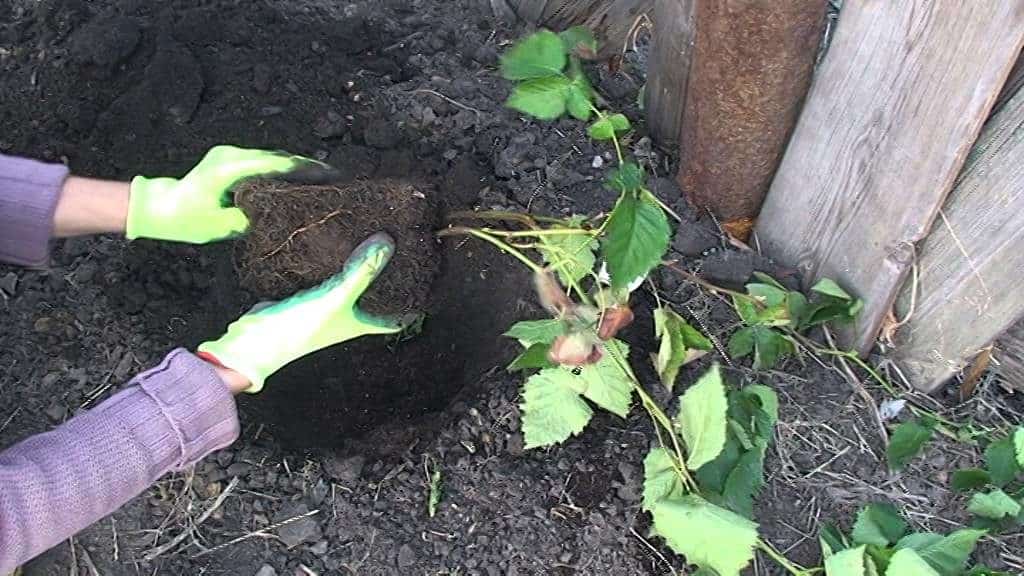
In the spring
Plant varieties that are not resistant to low temperatures are best planted in spring, in April. In this case, the soil should warm up to 10-15 degrees Celsius. For Siberia and the Urals, the spring planting period is chosen.
Features of planting blackberries
In order for the cultivation of berries to be effective, it is necessary to properly plant the seedlings. In addition to the timing, it is important to choose the right place for planting plants, prepare the soil. Without observing the distance between bushes and rows, it is difficult to get rich fruit yields.
Seat selection
Most of all, a blackberry plantation needs light. Therefore, it is better to lay a bed for seedlings in an open and sunny place. It is advisable that nothing covers the berry plants from the sun. We need to protect the bramble from the cold winds. Therefore, shoots are planted near the fence, stepping back 1 meter from it.
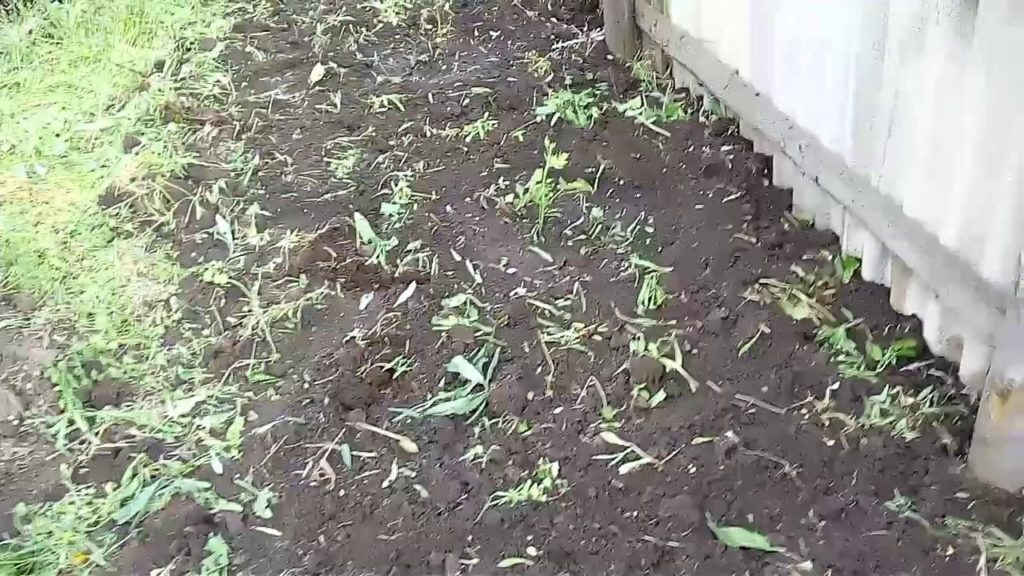
Priming
The site for the culture is prepared in advance. In the fall, they dig it up, add humus or compost - in a bucket per square meter. The depth of groundwater on the site should be up to 1.5 meters. Then the roots of the blackberry can get moisture from the groundwater. In the spring, before planting, it is necessary to scatter 20 grams of ammonium nitrate over the garden bed.
Trellis preparation
In advance, you can prepare a trellis for tying shoots. At the edges of the row, posts made of wood or metal are dug in 2 meters high. Between the supports, the wire is pulled in strips in 1 or 2 rows.
Site preparation
When the site has been dug up to a depth of 35 to 50 centimeters, cleared of weeds, it remains to apply 2 weeks before planting fertilizer in the form of superphosphate, potassium salt.
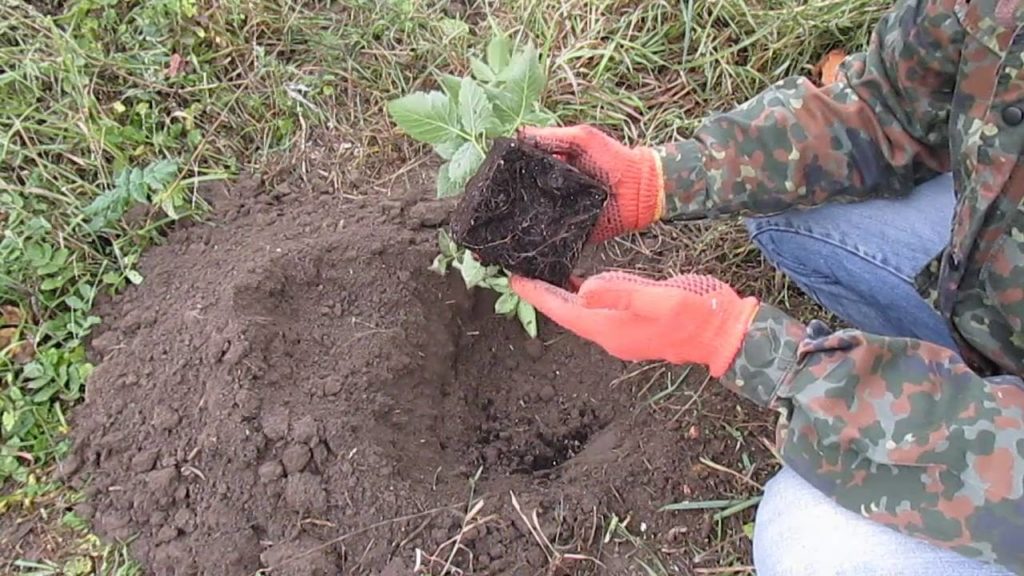
On acidic soils, an additional 200-400 grams of ground limestone is required.
Planting hole preparation
Pits for seedlings are prepared in 2-3 days. Before digging holes, the soil is harrowed and loosened. The size of the fossa can be 35 x 35 x 30 centimeters. If the bed was not fertilized, then a quarter of a bucket of humus mixed with superphosphate (7 grams), potassium salt (3 grams), soil is placed in each hole.
Landing technology
Fruit plants are planted vertically, placing the surface roots at a depth of 4-5 centimeters from the surface. After sprinkling the seedling with earth, lightly tamp the soil layer. After planting, the shoots are watered and a layer of mulch 6-8 centimeters thick is poured around the stems. You can mulch with sawdust, peat, straw.
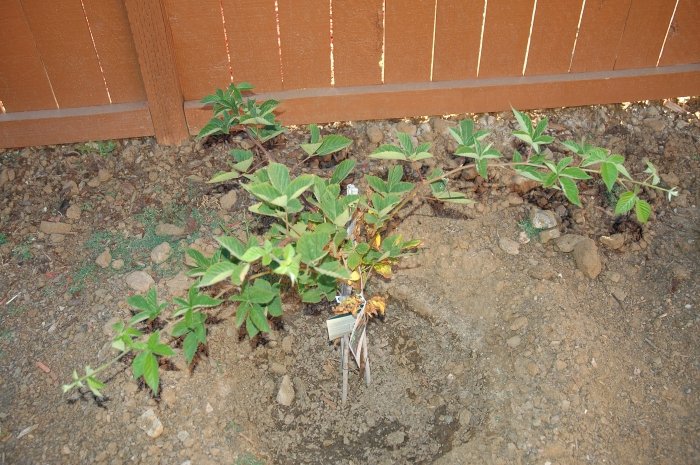
Distance between bushes and rows of blackberries when planting
The gap between the planting holes can be 1.5 meters if the bushes are compact. For creeping species, a distance of 1.8-2 meters is needed. A gap of 2 or 3 meters is left between the rows.
Blackberry care rules
Fruiting, the quality of berries depends on how the agricultural technology of garden culture is followed.Although blackberries are undemanding plants, they must be constantly looked after.
Watering
If you water the shoots abundantly immediately after planting and after another 3-5 days, then additionally moisten the rows 2 times per season. Increase the amount of watering when there is no rain for a long time. The last time it is necessary to moisten in October before wintering.

Loosening the soil
Loose and weed the garden beds as needed. Mulching replaces loosening, and moisture stays in the soil longer. Placing mulch on time will keep the soil weed-free.
How to prune blackberries
During the development of the plantation, sanitary pruning of dry, fruiting branches in autumn or spring is needed. To form a bush, weak processes are removed. For the 3-4th year of life, no more than 10-15 annual shoots are left in blackberries. The rest are carved from the ground. Do not forget to thin out the bushes before flowering, in June.
How to tie a blackberry
The shoots of the plant must be tied to the trellis. Moreover, they are arranged in a fan-like manner. The bushes will have enough light, and they will begin to bear fruit earlier. You can intertwine branches between the rows of wire.
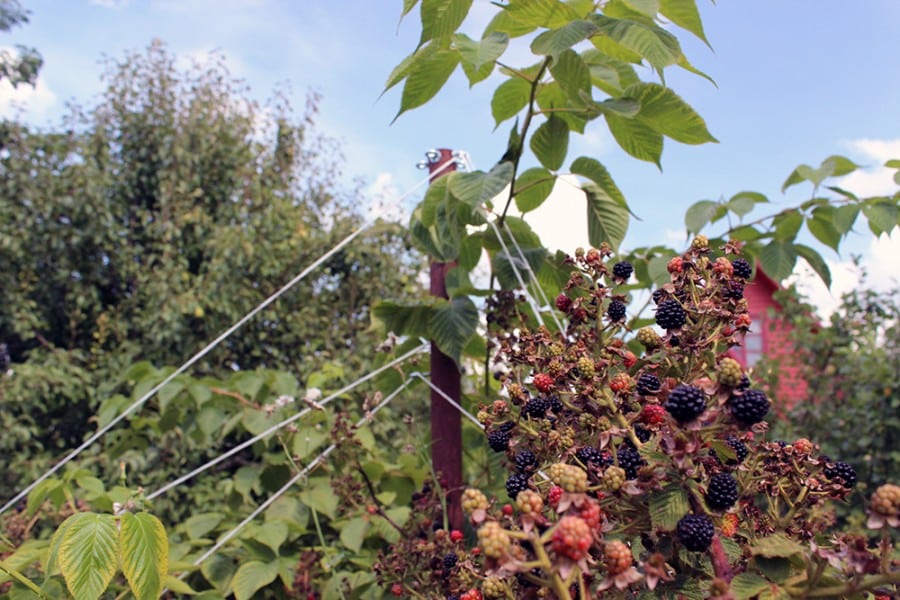
Shelter blackberries for the winter
For the thornless blackberry, shelter for the winter is a must. Plants are prepared for cold weather after pruning. Shoots taken from the trellis are tilted to the ground, pinned and sprinkled with earth tops. You can insulate it with spruce branches or layers of non-woven material.
Pests and diseases: precautions
Blackberries and raspberries share the same pests, since the plants are related. Blackberry plantations are struck by the raspberry weevil, stem fly, and raspberry beetle. They fight parasites by spraying with insecticidal agents. Infusions of tobacco, celandine, tansy help to get rid of them.
Fungal diseases affect crops during wet and cool growing seasons. The disease can be identified by brownish and whitish blooms on the leaves and stems. If signs of pathology are found, the affected parts are cut out, and the bushes are treated three times with Bordeaux liquid with a break of 10 days.

